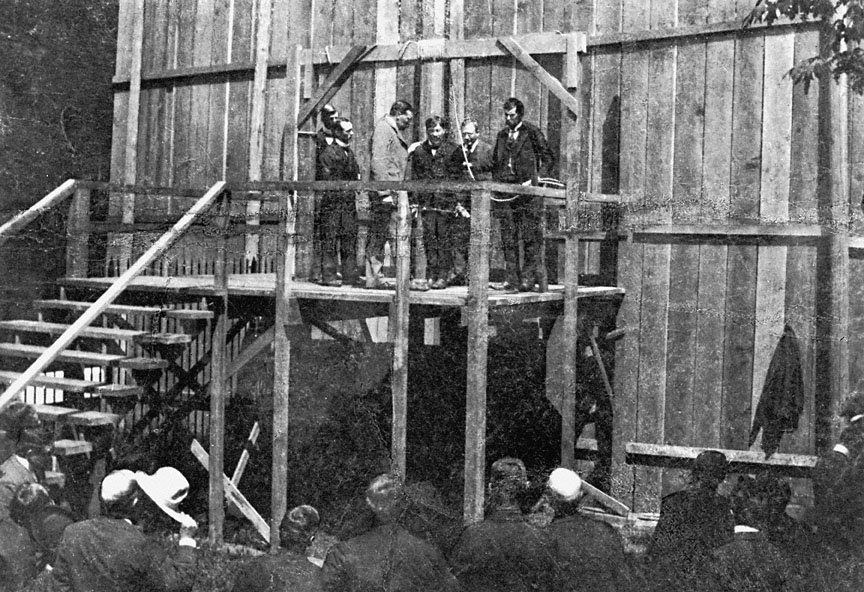This photograph shows convicted murderer Claude Branton on the gallows in Eugene on May 12, 1899. He was the first person to be legally executed in Lane County.
In the summer of 1898 Branton and another man named Courtland Green helped John A. Linn, a Gilliam County rancher, drive a herd of horses to the Willamette Valley. While on the trail Branton and Green conspired to kill Linn in order to steal cash they thought he was carrying. On the evening of June 15, while encamped at Isham’s corral (present-day Alder Springs), Branton shot and killed Linn while he lay sleeping. Branton and Green then built a bonfire and threw Linn’s body on it. In the morning they buried Linn’s remains under a rock. Expecting to find $1,000 in cash, they only found $65 in gold pieces.
Branton fled the state but Green continued on to Eugene. In a fit of drunken remorse, Green confessed to a deputy sheriff that Linn had been murdered, though he did not mention his involvement. Green led local officials to Linn’s remains. When Branton returned to Oregon two weeks later, he was arrested and charged with murder. Green’s role in the killing soon came to light and he, too, was charged with Linn’s slaying. Green later pled guilty and was sentenced to life in the state penitentiary. Branton was tried separately, and on November 8, 1898, he was sentenced to be “hanged by the neck until he be dead.” Branton was hanged the following May in front of approximately fifty witnesses. The Daily Eugene Guard reported that a large crowd milled outside the courthouse during the execution, and that two people, a man and woman, viewed the spectacle from the courthouse’s clock tower.
Prior to the 1870s, hangings in Oregon were public affairs, often attended by large crowds. In 1874 the state legislature passed a law that prohibited public executions and required hangings to be held at the jails in which the condemned were held. This reform did little to lessen public interest in executions. Large crowds still gathered outside the jails despite the high walls erected around the gallows to shield the execution from the public.
In January 1902 a double execution in downtown Portland drew a raucous crowd of men, women, and children, some of whom stood on the roofs of nearby buildings or climbed telephone poles to observe the hangings. The state legislature responded by passing a law the following year that required all executions to be performed at the State Penitentiary in Salem.
Further Reading:
Goeres-Gardner, Diane L. Necktie Parties: Legal Executions in Oregon, 1851-1905. Caldwell, Idaho, 2005.
Long, William R. A Tortured History: The Story of Capital Punishment in Oregon. Eugene, Oreg., 2001.
Written by Cain Allen, © Oregon Historical Society, 2006.
